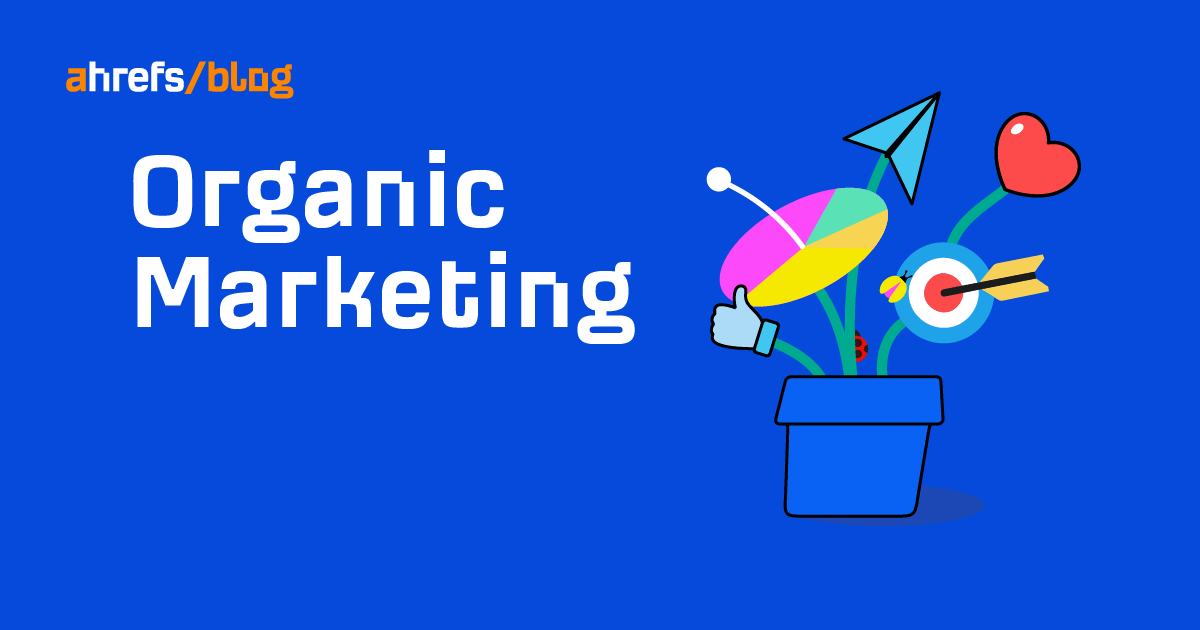Information Gain: How Top Content Leaders Win at SEO
Ever stumbled upon a competing post and thought, “Damn, I wish I wrote that”? That feeling of envy mixed with respect? It usually means you learned something new. This concept is known as “information gain” in SEO. It’s what...

Ever stumbled upon a competing post and thought, “Damn, I wish I wrote that”?
That feeling of envy mixed with respect?
It usually means you learned something new. This concept is known as “information gain” in SEO.
It’s what makes your content fresh—often leading to better rankings.
To explore the concept in depth, check out these articles by Animalz and Clearscope. They’ve nailed the theory.
This post aims to complement them by providing practical, real-world applications of information gain.
I interviewed three content leaders in various industries about their best work.
Here’s who I talked to:
| Caroline Gilbert | Director of Content | Angi | Home Services | 6.4M |
| Nisha Vora | Founder | Rainbow Plant Life | Recipes | 748K |
| Sam Balter | Head of Content | Wistia | Video Marketing | 114.5K |
In this article, you’ll get an inside look at how these pros approach proprietary content—so you can apply it to your strategy.
I’ll also share how to make information gain part of your content workflow.
But first, let’s touch on how Google thinks about knowledge.
Understanding Information Gain: Inside Google’s Black Box
The 2020 Google patent application gave us insights into how the search giant evaluates content.
The punchline?
Google is building a complex understanding of how topics evolve.
It uses a knowledge graph to map relationships between concepts and identify new information.
The patent describes measuring “additional information that is included in the document beyond the information contained in documents that were previously viewed by the user.”
What does this mean?
Picture this scenario:
The top five search results for “SEO best practices” all talk about the same old stuff.
Keywords. Links. Etc.
But then, a new article pops up discussing how AI is changing SEO.

What does Google do?
It runs a test to see how users engage with this new information.
Google detects unique information on the post, and it may bump it to the top position in the SERP.
Then, monitor how users interact with the content to understand if this new information provides a positive experience.

Google now has more data for its knowledge graph.
And this process repeats every time Google detects potentially valuable new information.
Information Gain Goals
Adding too much new information may be risky if you publish SEO-driven content.
Your content should satisfy the user’s primary search intent. Then, add new information.
Overloading your content with new information might make Google doubt its relevance to the query.
As a general guideline, we aim for 10-40% information gain at Backlinko.
This should give Google enough new content to test for our target keyword.

We use this framework to guide writers. It’s not a hard rule, but a helpful starting point for balancing search intent with adding value.
In the following examples, you’ll see how top content leaders are adding new information with amazing results.
Let’s start with Angi’s unique combination of data and empathy to add knowledge to the home services industry.
Case Study #1: Angi’s Bathroom Remodel Cost Guide
Angi (formerly Angie’s List) is a home services platform that connects homeowners with local contractors.

Caroline Gilbert is the Director of Content and Editorial at Angi.
With a background at Siege Media (a top-tier SEO agency), Caroline knows a thing or two about creating content that ranks and converts.
Here’s the post she shared as an example of information gain: How Much Does a Bathroom Remodel Cost?

This guide details bathroom remodeling costs, from basic upgrades to luxury renovations.
What makes it stand out?
Proprietary data and reader empathy.
Let’s break it down.
Proprietary Data
Out the gates, Angi hits you with unique insights:
“The average cost for a bathroom remodel ranges from $6,634 to $17,594, with a national average of $12,080.”
Where’d they get these numbers?
From customers.

Angi has built a massive database of real project costs over the years. This isn’t guesswork or aggregated data from other sources.
As Caroline explained, it’s their content moat.
But how data is presented matters, too.
The Angi team takes it a step further with an interactive cost calculator.

Simply enter your ZIP code, and the calculator will adjust the price range for your area.
Very cool.
Deep Reader Empathy
Caroline emphasized that empathy is essential to how they add unique value.
It tracks.
Check out this opener:

They acknowledge the reader’s aspirations while addressing potential budget concerns.
This shows they understand the desires and anxieties of a bathroom remodel.
How does Angi maintain such strong user-centric content at scale?
It’s a multi-faceted approach:
Industry-savvy editors: Many team members have backgrounds in home-related fields or adjacent industries like mortgages and personal finance. UX research collaboration: Editorial partners with the UX research team to access in-depth customer studies. Pro interviews: The content team has access to Angi’s industry-leading pro network to get insights from real home service professionals.The result?
Content that DEEPLY resonates with homeowners facing big decisions.
Results
Angi’s article seamlessly connects homeowners’ bathroom remodeling needs with its service providers (pros).
It’s a direct pipeline to their business.
This approach pays off—big time.
In September 2024, this single article had:
39.8K monthly organic visits $330.0K in traffic value Rankings for 2.8K keywords
Key Takeaways
Find your data edge. What unique insights can you offer? Invest in understanding your audience Bridge the gap between information and action. How does your content connect to your business goals?Case Study #2: Rainbow Plant Life’s Thai Green Curry
Rainbow Plant Life, founded by Nisha Vora, is a vegan recipe blog that has exploded in popularity.

We’ll be analyzing her Vegan Thai Green Curry post.
This curry recipe is a deep dive into Thai cuisine, reimagined for plant-based eaters.

Nisha applies information gain through:
Extensive research Rigorous testing Visual storytelling Time investmentLet’s review her approach.
Extensive Research
When researching the recipe, Nisha doesn’t just Google “Thai green curry” and call it a day.
In fact, she intentionally avoids looking at the top-ranking recipes.
Instead:
She gives herself time to explore all angles of the recipe.
Nisha’s research process included:
Watching YouTube videos from Thai creators (with subtitles if necessary) Reading articles by food writers specializing in Thai cuisine Studying traditional ingredients and cooking methodsNisha creates a comprehensive Google Doc with notes on ingredients and traditional cooking methods, including how to make curry paste from scratch.
This level of research ensures that her recipes are grounded in authenticity, even when adapting them for her audience.
Rigorous Testing
Think a couple of test runs are enough?
Nope.
Nisha’s testing process for this recipe included:
Six iterations of the green curry paste alone Eight versions of the curry Variations with homemade and store-bought curry pastes Different vegetable combinationsThat’s a lot of curry.
But it ensures the final recipe is foolproof.
And DELICIOUS.
Visual Storytelling
Nisha’s visual content is a feast for the eyes.
Her hero image for the Thai Green Curry is a perfect example:

Notice the vibrant colors? The perfectly placed garnishes?
That’s no accident. She’s perfected a photography style that makes her food pop off the screen.
But Nisha doesn’t stop there.
She included step-by-step photos throughout the recipe.

These progress images:
Break down complex processes Set expectations for how the dish should look at each stage Keep readers engaged from start to finishThe combination of stunning hero images and helpful progress photos creates a visual narrative that complements the written content.
Time Investment
Want to know the real secret to Nisha’s success?
Time. Lots of it.
Here’s a breakdown of how much time Nisha spent on this recipe:
| Research | 3 hours |
| Recipe writing | 2 hours |
| Grocery shopping | 2 hours |
| Recipe testing | 14 hours |
| Photoshoot | 4 hours |
| Writing the post | 3 hours |
| Uploading to WordPress and final review | 1 hour |
| Total | 29 hours |
That’s four full workdays for a single post.
This commitment is far beyond what many creators invest, and it shows in the quality of the recipe.

Results
Was all that time and effort worth it?
The numbers speak for themselves:
222,282 page views over the past year, with 80% coming from Google searches. Ranks near the top for “green curry recipe” Shared over 1,200 times across various platforms
Key Takeaways
Deliver a superior result. For recipes, it’s thorough research and extensive testing. Bridge the gap between information and action. Provide comprehensive instructions and visual aids to help readers succeed. Stay in your lane. Consider not reviewing competing content. Focus on creating value.Case Study #3: Wistia’s State of Video Report
Wistia is a leading video hosting and marketing platform with exceptional content.

I spoke with Wistia’s Head of Content, Sam Balter.
Here’s the piece we’re reviewing: “State of Video Report”

This report shares video marketing trends backed by Wistia’s data and expertise.
Here’s how Wistia applies information gain:
Unique data “Show, don’t tell” approachLet’s dig in.
Unique Data
Wistia’s position as a video hosting platform gives them access to unique insights.
Like Angi, this level of data is Wistia’s content moat. It’s information that competitors can’t easily replicate.
For example, they provide interesting insights into video consumption behaviors.

They also break down data by company size.

This granular, industry-specific data provides immense value to their audience.
“Show, Don’t Tell” Approach
Wistia doesn’t just talk about video marketing—they live it.
For instance, they used their product features to create the State of Video live event. Then followed up with content explaining how they did it.

This behind-the-scenes content is highly engaging and naturally unique. It shows Wistia’s product, gives a real-world example, and builds trust.
Results
Traffic is important. But Wistia’s priority is to be the go-to resource for video marketing.
This trust translates to:
Increased return visitors to the website Positive feedback (users often refer to the blog as “Wistopedia”) High-quality backlinks (e.g., 943 backlinks and almost 354 referring domains for the video marketing report page)
Key Takeaways
Leverage your unique data. What insights can you offer that no one else can? Practice what you teach. Use your products or services to create content, then share the results.How to Add Information Gain to Your Content Workflow
Now that you know about information gain and have seen examples, I hope you’re excited by its potential.
But you might be wondering, “How do I implement this?”
Our team has been testing ways to scale information gain. We’ve landed on four best practices.
1. Review The Content Standards in Your Niche
Your industry will influence how much you need to invest in information gain.
In other words, the required effort is relative to your competition.
Say you’re in personal finance.
You’re up against NerdWallet, which ranks first for “high yield savings account.”

This page brings in over 404,400 visitors per month from organic searches.
And the traffic cost is $2.3 million.

How?
Beyond being an authority in personal finance, NerdWallet’s team collects and reviews data from over 90 financial institutions.
And considers over 50 data points to find the best banking options for customers.

To top it off, they create video content and embed it in the article.

Needless to say, you need to bring your A++ game to have a shot in personal finance.
But the investment may be worth it, as it’s a lucrative market.
Different example:
This time, imagine you’re in the vacation rental software niche.
Lodgify is a pretty big player. It ranks in the top spot for “how to start an Airbnb business.”

The article is about 2,000 words and includes a business plan template and an audio version of the content.

Not bad.
But not extraordinary.
With some effort, you could interview some of the top Airbnb hosts and include their insights in your article for a 20-30% gain.
As you can see, there’s a big difference between personal finance and vacation rentals.
Review your niche’s content standards to understand what’s working and missing in the knowledge graph.
Then, you can move on to brainstorming ideas.
2. Create a List of Information Gain Ideas
One of the most challenging aspects of information gain is coming up with creative ideas.
I recommend creating a reference document that lists ways to add to Google’s knowledge graph.
Start by brainstorming with your team. Or, if you’re working solo, set aside time to ideate.
Think about new angles, data, or perspectives for your content.
To make this process easier, group your ideas. Here’s an example of what your information gain cheat sheet might look like:
| Original research studies | Expert interviews | Custom infographics | Calculators or tools | Custom methodologies | Checklists |
| Industry surveys | Behind-the-scenes access | Step-by-step screenshots | Quizzes or assessments | Scoring systems | Worksheets |
| Data visualizations | Case studies | Explanatory videos | Interactive charts | Concept models | Swipe files |
| Trend analysis | Thought leader roundups | Before-and-after comparisons | Decision trees | Acronym-based systems | Templates |
| Benchmark reports | Insider tips | Process flowcharts | Customizable templates | Analogy-driven explanations | Scripts or formulas |
| Predictive modeling | Myth-busting segments | Annotated examples | Live polls | Maturity models | Resource lists |
Keep this list handy and refer to it when planning new content.
3. Invest in Content
You need time, skill, or tools to add knowledge to your niche. It’s likely a mix of all three.
Let’s break this down.
Time Investment
Prepare to extend your production cycle. You’ll need time for the extra steps in creating unique content.
For instance, if you’re doing original research, you’ll need to collect data, analyze it, and draw meaningful conclusions.
Or if you interview experts, you’ll have to schedule and prepare for meetings.
Back to Nisha’s case study, she’s putting in 20-30 hours into her recipes.
It took me over 20 hours to write an article about the best SEO software for agencies.
The gain came from sharing tools used by agencies turning over at least $1 million.
I also signed up for each tool and did thorough testing, then showed screenshots of my findings.

Now the post bounces between the top positions.

Skill Investment
There’s no way around it. You need skilled people to find ways to add knowledge to each post.
If you’re an individual contributor
Consider taking courses to level up in data analysis, interviewing techniques, or visual design. This can help you execute your vision for information gain more effectively.
These skills also make you WAY more valuable to your managers or clients.
And even as a solo creator, you can still beat bigger websites.
Brian Dean posted 1-2 high-quality articles a month when building Backlinko.
His quality-over-quantity approach significantly contributed to the SEO knowledge graph with methods like the skyscraper technique and reverse outreach.
In fact, the skyscraper method became a keyword in SEO.
As this technique didn’t exist before Brian’s post, it represents 100% information gain on Google’s knowledge graph.

As a one-person show, Brian was able to outrank established marketing websites with massive content budgets.
If you’re a content leader
Hire skilled writers, editors, designers, or data analysts who can bring specialized expertise to your content.
For example, we have a design team. They create custom graphics, slick screenshots, callout boxes, and more.
We also have highly skilled writers and editors who think outside the box about filling knowledge gaps.
Bottom line?
It’s worth paying well for talent with experience creating standout content in your industry.
Tool Investment
The right tools can make a BIG difference in your ability to create unique content.
For this article, I used Read.AI to automatically transcribe my interviews.

Then, I uploaded the transcript to Claude AI to draft the case study copy based on my detailed post outline.
These two tools saved me a few hours in production.
Other examples include:
Design tools like Canva for creating custom visuals Survey tools like SurveyMonkey for gathering original data Data visualization tools to present information in engaging waysYour tools will depend on your content strategy. But prepare to budget for software that will save you time.
4. Build Information Gain into Your Brief
Make information gain a central part of your planning.
For example, we have a dedicated section for information gain in our content briefs.
It’s not an afterthought—it’s one of the first things we consider when creating content.
Here’s what it looks like:

This section forces us to think critically about what unique value we’re bringing to the topic.
It also helps us to:
Generate more creative ideas Identify potential challenges early Get alignment on how the post will add unique valueImplementing these strategies in your content workflow isn’t always easy. Experiment to find what works best for your team.
But, if you research your market, generate ideas, and invest in your content, you’ll create content that evolves Google’s knowledge graph.
And, above all, add value to the people who consume your content.
Putting Information Gain to Work
You’ve seen how brands like Angi, Rainbow Plant Life, and Wistia use information gain to stand out.
Now it’s your turn.
You don’t need to reinvent the wheel for every piece of content.
Start small and:
Pick your next article topic Brainstorm 2-3 ways you could add unique value (use our cheat sheet for inspiration) Implement the best idea, even if it takes a bit more timeThat’s it.
You’ve just taken your first step toward creating content that adds knowledge to the internet.
Want to dive deeper into creating content that ranks?
Check out our guide on E-E-A-T (Experience, Expertise, Authoritativeness, and Trustworthiness). It’s the perfect complement to your information gain strategy.

 Troov
Troov 































